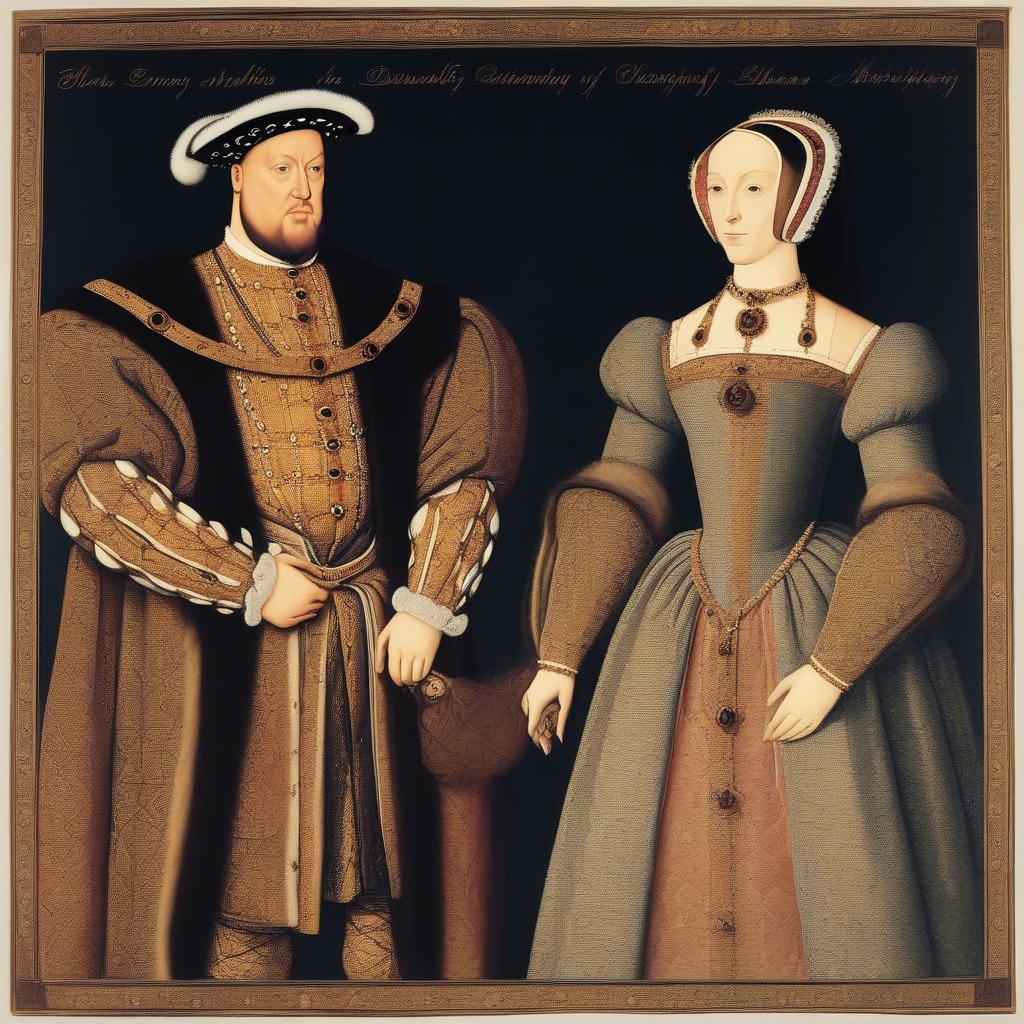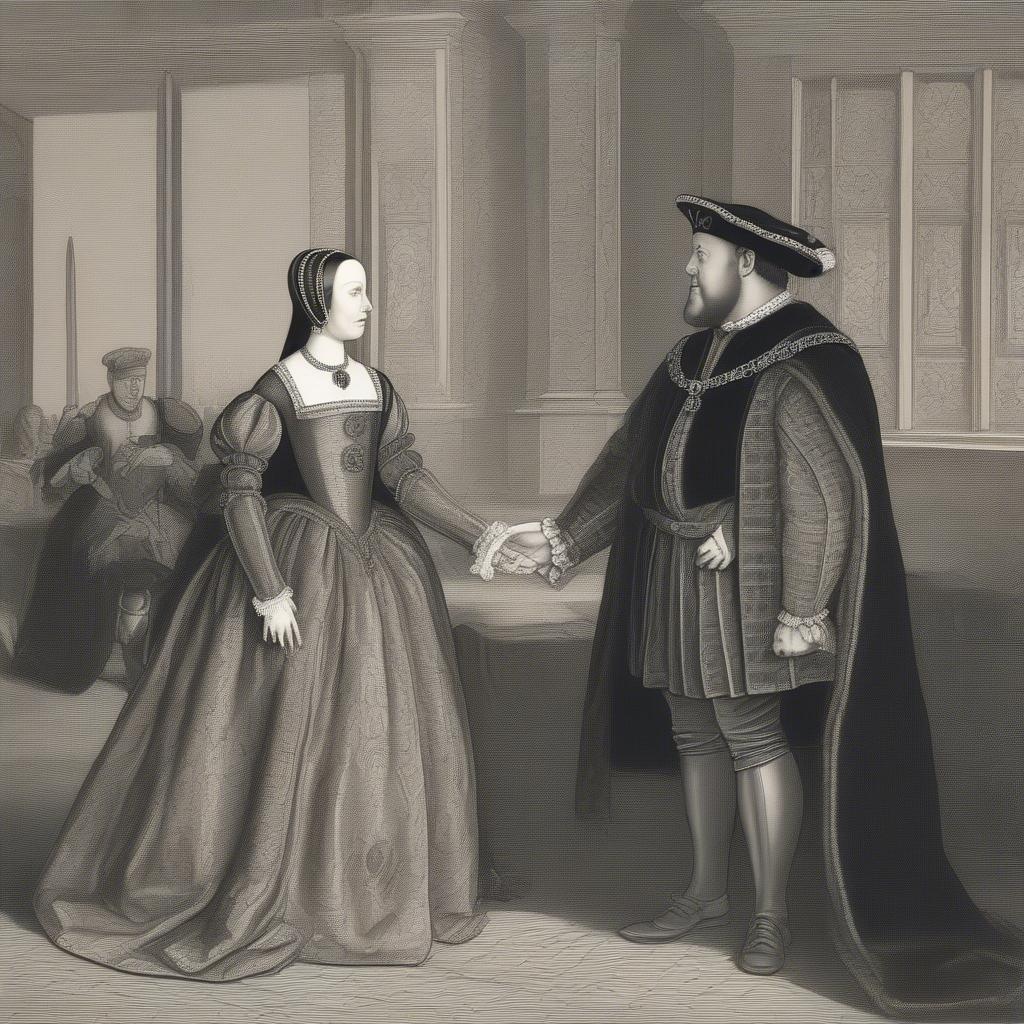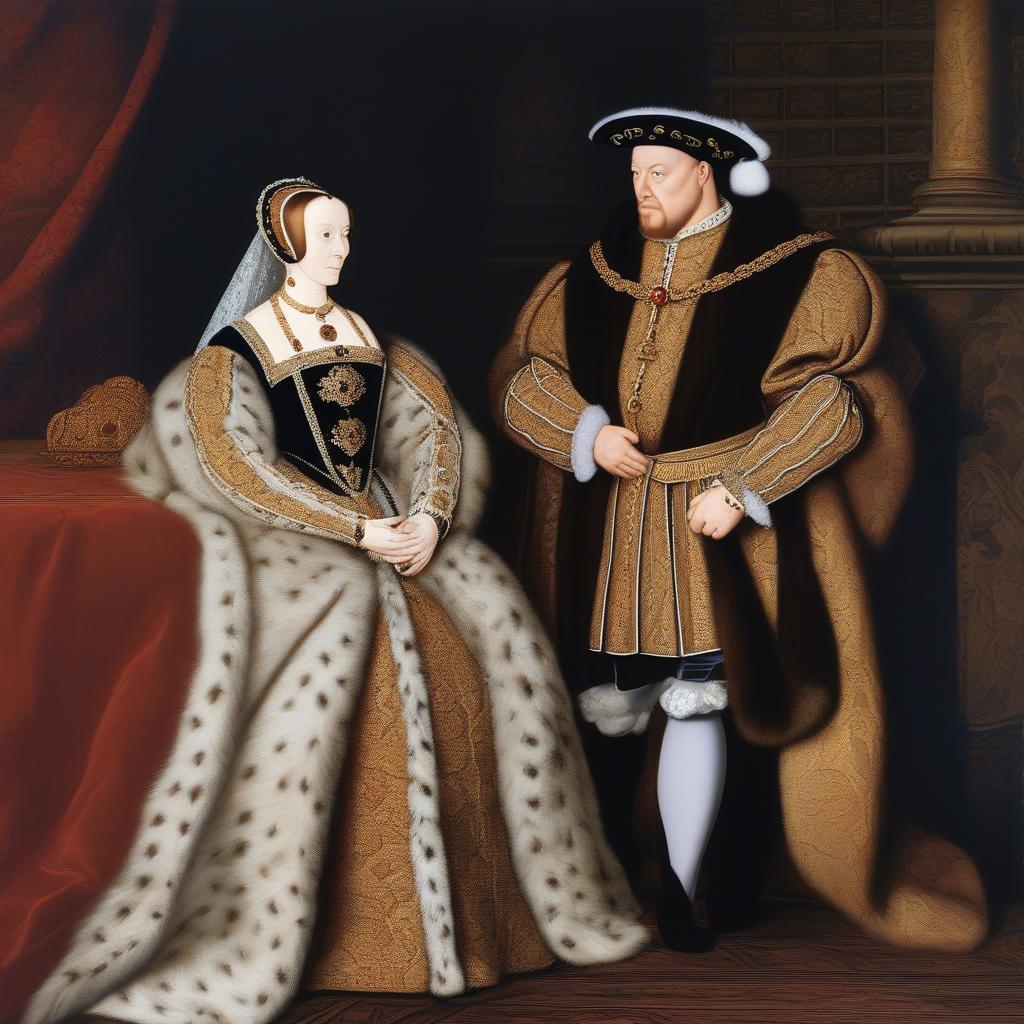The question of whether Henry VIII truly loved any of his six wives is a complex and enduring one. For centuries, historians and romantics alike have debated the motivations behind his marital decisions, trying to decipher whether genuine affection played any role amidst the political machinations and desperate desire for a male heir. Let’s delve into the lives and relationships of Henry and his queens to explore this fascinating historical puzzle.
The King’s Great Need: An Heir and a Love?
Henry’s tumultuous marital history was undoubtedly driven by his desperate need for a male heir to secure the Tudor dynasty. This overriding ambition colored his relationships with each of his wives, making it difficult to separate political expediency from genuine affection. However, glimpses of what might be interpreted as love can be seen in some of his marriages, though often fleeting and overshadowed by other considerations.
Catherine of Aragon: A Love Lost to Time and Politics
 Henry VIII and Catherine of Aragon in their early years
Henry VIII and Catherine of Aragon in their early years
Henry’s first marriage to Catherine of Aragon began with genuine affection. They were a well-matched couple, both devout Catholics, and enjoyed many years of companionship and mutual respect. Catherine was a strong and intelligent woman, a valuable political ally, and initially, Henry seemed content. However, the lack of a surviving male heir gradually eroded their relationship. The pressure to produce a son and secure the succession ultimately led Henry to seek an annulment, a decision that shattered Catherine and plunged England into religious and political turmoil.
Anne Boleyn: A Passionate Affair with a Tragic End
Henry’s infatuation with Anne Boleyn was undeniable. Her wit, sophistication, and refusal to be merely a royal mistress captivated him. He pursued her relentlessly, eventually breaking with the Catholic Church to secure a divorce from Catherine and marry Anne. This passionate pursuit suggests a deep emotional connection, perhaps even love. However, Anne, like Catherine, failed to produce a living son. Accusations of treason and witchcraft, likely orchestrated by Henry’s advisors and fueled by his growing impatience, led to her execution.
 Anne Boleyn and Henry VIII during their courtship
Anne Boleyn and Henry VIII during their courtship
Jane Seymour: A Brief Respite and a Royal Heir
Jane Seymour, Henry’s third wife, finally provided him with the male heir he craved – the future Edward VI. She was a quiet and unassuming figure, a stark contrast to the vibrant Anne Boleyn. While their relationship lacked the fiery passion of his previous marriages, it was marked by respect and perhaps even a gentler form of affection. Jane’s tragic death shortly after childbirth prevented their relationship from truly developing, leaving historians to speculate on its potential.
Anne of Cleves: A Mismatched Union Quickly Dissolved
Henry’s marriage to Anne of Cleves was primarily a political alliance. Based on a flattering portrait, Henry had anticipated a beautiful and sophisticated bride. Disappointed by her appearance upon meeting her, he quickly sought an annulment. This short-lived and largely loveless union highlights the importance of physical attraction in Henry’s marital choices.
Catherine Howard: A Young Bride and a Scandalous End
Catherine Howard, a young and vivacious woman, briefly captured Henry’s attention. However, her alleged infidelity, whether true or fabricated, led to her execution. This marriage, marked by suspicion and betrayal, suggests a lack of genuine love and trust.
Catherine Parr: A Companion and a Survivor
 Catherine Parr and Henry VIII in his later years
Catherine Parr and Henry VIII in his later years
Henry’s final marriage to Catherine Parr proved to be the most enduring. Catherine, an intelligent and independent woman, provided companionship and intellectual stimulation to the aging and increasingly ill king. She navigated the treacherous waters of court politics with skill, surviving Henry and outliving all his other wives. Their relationship, while perhaps not passionate, seemed to be based on mutual respect and affection.
Did Love Play Any Role?
The complexities of Henry VIII’s motivations make it difficult to definitively answer whether he truly loved any of his wives. While political considerations and the desire for a male heir undoubtedly played a significant role, glimpses of what might be interpreted as love, or at least deep affection, are evident in some of his marriages, particularly with Catherine of Aragon and perhaps Jane Seymour and Catherine Parr. Ultimately, the question remains a matter of historical debate and interpretation.
Conclusion
The question of whether Henry VIII loved any of his wives remains unanswered. While his desire for a male heir significantly impacted his marital decisions, evidence suggests genuine affection may have existed in some of his relationships. This complex interplay of love, politics, and ambition continues to fascinate historians and reminds us that even the most powerful figures are driven by human emotions. Did Henry Viii Love Any Of His Wives? Perhaps only time, and further historical analysis, can tell.
FAQ
- How many wives did Henry VIII have? Six.
- Which wife gave Henry VIII a son? Jane Seymour.
- Who was Henry VIII’s first wife? Catherine of Aragon.
- Which of Henry VIII’s wives were executed? Anne Boleyn and Catherine Howard.
- Who outlived Henry VIII? Catherine Parr.
- Why did Henry VIII want a male heir? To secure the Tudor dynasty.
- Which wife did Henry VIII divorce? Catherine of Aragon and Anne of Cleves.
For further assistance, please contact us at Email: contact@daiduongtranhba.com, or visit our office at Michigan Ave, Suite 3100, Chicago, IL 60611, USA. We have a 24/7 customer support team.

